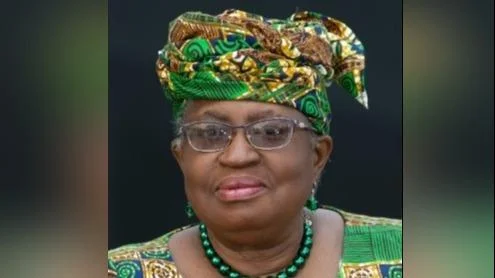Thank you, Edwin, for the kind words of welcome.
Ladies and Gentlemen,
It is an honor to be here with you today. The investments you are making or planning will have lasting repercussions for decades to come and will significantly influence our ability to achieve the net zero targets essential for preserving our world for future generations. Wood Mackenzie has estimated that the cost of decarbonizing global iron and steel by 2050 would amount to $1.4 trillion.
We understand it can be incredibly challenging for you to ensure reasonable guarantees of a return on investment: What will be the winning technologies? What will be the national, regional, global, and regulatory framework, and could you influence their shaping? What will determine the price tag? How to maintain a level playing field? And who will shoulder the costs of going green?
At the WTO Secretariat, we primarily perceive trade risks that add up to these investment challenges:
You are part of a global industry; 30% of your products are being traded, and globalization is being challenged. You come from a historically brown industry, and globalization is turning green, but international policies’ coordination is lacking at this stage.
Ladies and Gentlemen, we are determined to confront these challenges alongside you. Our ongoing conversation about “global green steel standards” addresses this question: how to maintain open globalization while achieving an efficient green transition?
First, is globalization receding? Like you, we see daily news pronouncing the rise of protectionism and sometimes even the end of globalization and the world trading system. We also witness creative language trying to capture new trends in world trade such as “decoupling,” “de-risking,” “re-shoring,” “near-shoring,” “friend-shoring,” “weaponizing.”
At the WTO we unequivocally see that trade is not structurally receding nor is globalization. Trade growth has been somewhat stagnating since the 2008 crisis as measured by the global share of exports to GDP. While trade costs continued to come down, some factors pulled in opposite directions. Perhaps most importantly, production across the globe has returned to a more normal speed after rapid unbundling before the crisis. Economic activity has shifted towards economies and sectors like services with lower openness—none of which signals deglobalization.
Overall world trade has proven resilient even during recent challenging years. It rebounded well after collapsing during COVID-19 and continues to withstand ongoing conflicts. Projections indicate that global trade volumes will increase by 2.6% in 2024 and 3.3% in 2025 after falling by 1.2% in 2023.
On trade policy fronts monitored with our WTO Members' cooperation: while goods trade faces new restrictive measures on both import/export sides there’s also a strong trend toward facilitating measures outweighing restrictions.
Today we do not see a threat of collapse in global trade but recognize increasing tensions/conflicts within specific areas like geopolitical tensions/new conflicts stemming from green transitions/revived industrial policies linked increasingly with green transitions (e.g., export restrictions/subsidies).
Geopolitical tensions: WTO economists observe evidence showing bilateral US-China growth decreased by 30% compared with their respective trades globally while sanctions/export controls' affected share rose steeply from around 4% (2016) up till approximately12%(2022).
Green transition: Tariff wars/trade defense instruments apply increasingly within critical sectors (e.g., US/EU tariffs/investigations on Chinese electric vehicles reciprocated). Despite observed "hot spots" forming around these sectors/trade volumes remain relatively concentrated—our rough estimate shows aggregated restrictive measures announced represent roughly only four percent total US imports from China overall currently despite higher risk potential needing containment through non-discrimination/transparency/rule-of-law based WTO systems controlling negative spillovers effectively long-term ensuring smooth multilateral functioning supporting coordinated climate objectives worldwide collectively avoiding fragmented approaches hindering shared goals instead promoting interoperability between different strategies enhancing mutual recognition expanding technological dissemination/market expansions accelerating innovation reducing manufacturing costs facilitating pro-climate initiatives fostering sustainable futures cooperatively achieved optimally moving forward positively altogether globally together sustainably ahead ultimately better comprehensively forever united ideally always best finally overall long-run!
###

